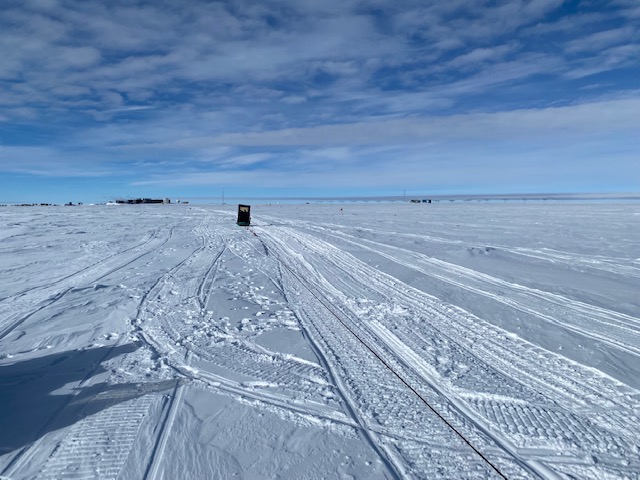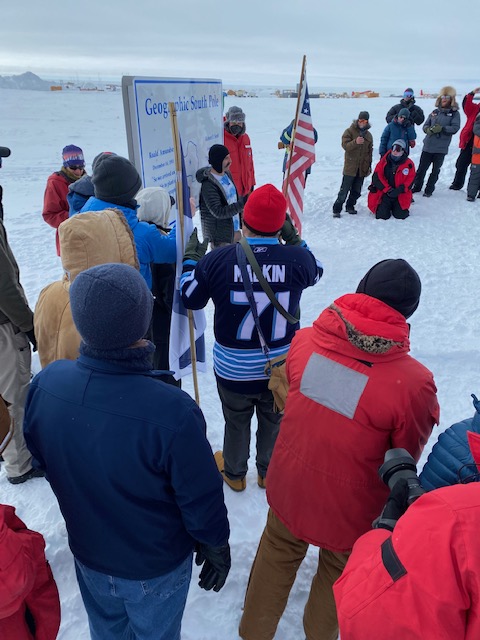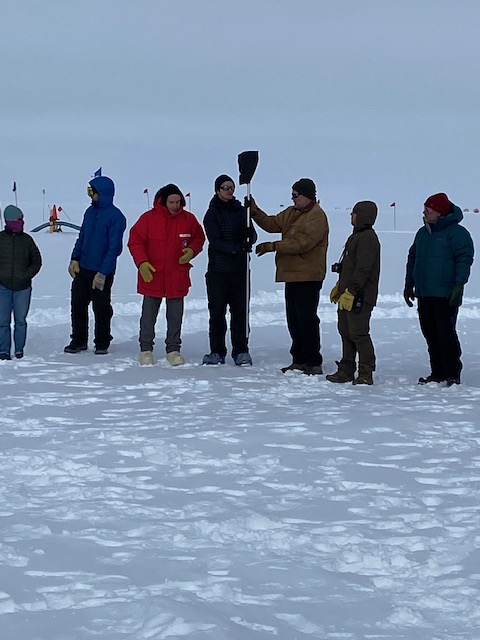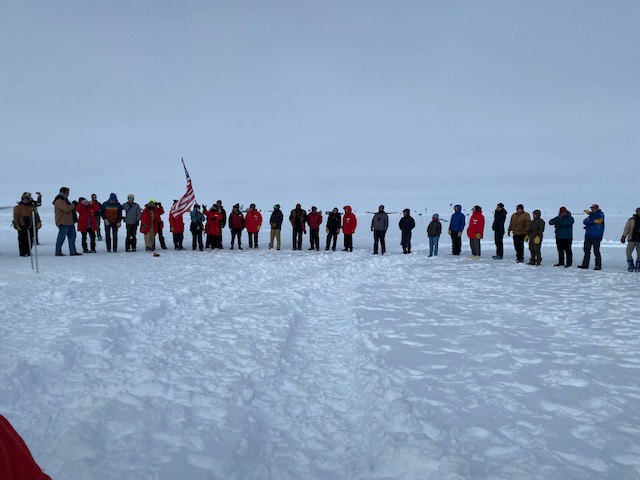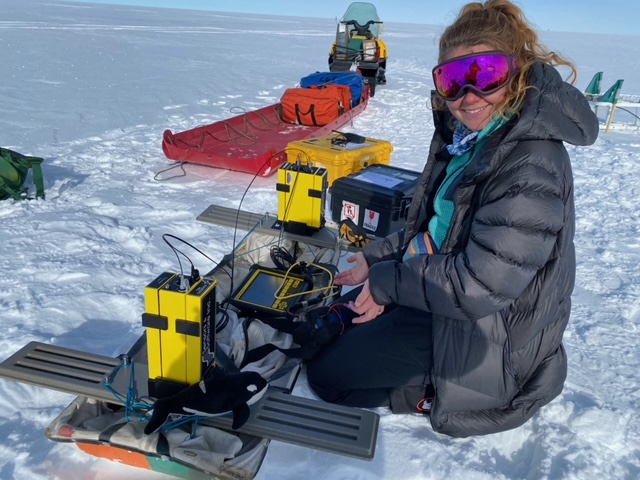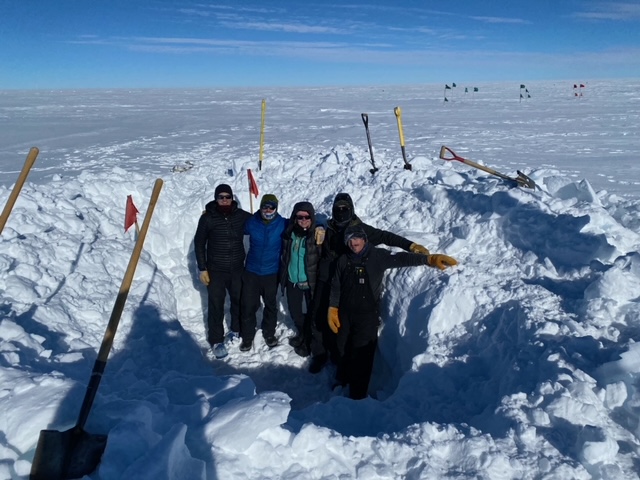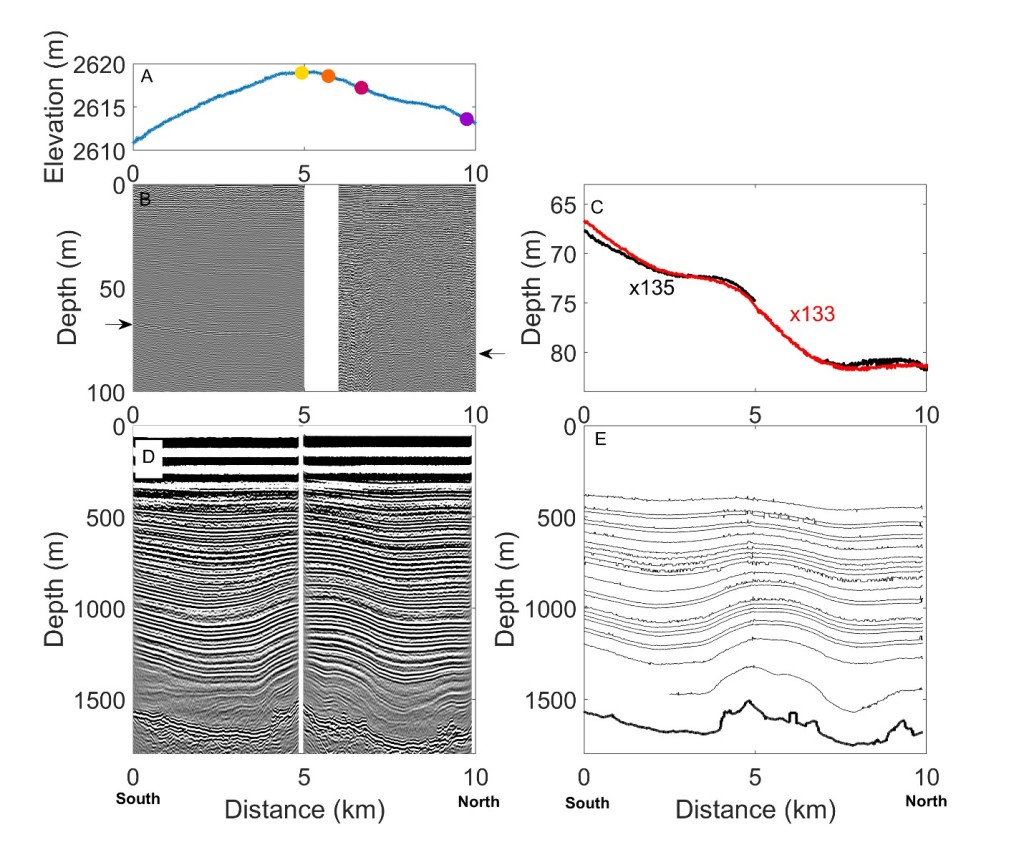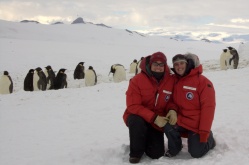My first trip to South Pole was for the South Pole Ice Core Project, or SPICEcore. We drilled at 1750m deep core, still about 1000m off of the bed, over the 14/15 and 15/16 seasons. The core went back 55 thousand years.
I’ve actually spent a fair bit of time out at SPICEcore this year. We set up a little cargo area out there where we tested radar equipment and drilled some shallow cores. SPICEcore is no longer an area of activity, with only the casing sticking up above the surface. You’d never think that the hole drops more than a mile down into the ice sheet.
We went down into the “tunnels” last weekend, and found this SPICEcore relic. I’ll have another post on the tunnels, but one feature is the different “shrines” that are created in the walls. The SPICEcore glove lives on in infamy! I hadn’t seen this before since I was only part of the first field season and I had forgotten about the pictures I had seen of it – so I was completely surprised to come across the SPICEcore shrine. It’s fun that SPICEcore lives on not just at the core site, but in the tunnel of South Pole station too.






